Abstract
Navigating doorways is a fundamental yet challenging task for mobile manipulators, requiring coordinated motion of both the mobile base and the manipulator arm. This paper presents a novel motion planning framework that generates dynamically feasible and collision-free trajectories for a mobile manipulator to autonomously open and traverse both push and pull-style doors. Our core contribution is a nonlinear model predictive control (MPC) formulation that treats the robot and the door as a single, coupled dynamical system. By encoding the manipulation constraints as a penalty within the cost function, we eliminate the need for complex, arm-specific kinematics or mixed-integer programming, resulting in a planner that is generalizable across different manipulator configurations. We detail the full trajectory optimization problem, including a robust geometric constraint formulation that prevents collisions with the door panel. The planned trajectories are tracked using a hierarchical controller that integrates a differential inverse kinematics solver for the arm with a nonlinear MPC for the mobile base. We validate our approach through high-fidelity simulations in NVIDIA Isaac Sim and hardware experiments on a commercial dual-arm mobile manipulator, demonstrating the planner's capability to generate smooth and successful trajectories for this complex task.
Unified Planning with Nonlinear MPC
Our core contribution is a nonlinear model predictive control (MPC) formulation that plans for the mobile base and the door simultaneously, treating them as a single coupled dynamical system. This unified approach produces smooth, dynamically consistent motions. By encoding a geometric manipulability metric into the cost function, our planner remains generalizable across different robot arms without needing to model their specific kinematics during high-level planning. Below are examples of the optimized trajectories generated by our planner for both push and pull-style doors.
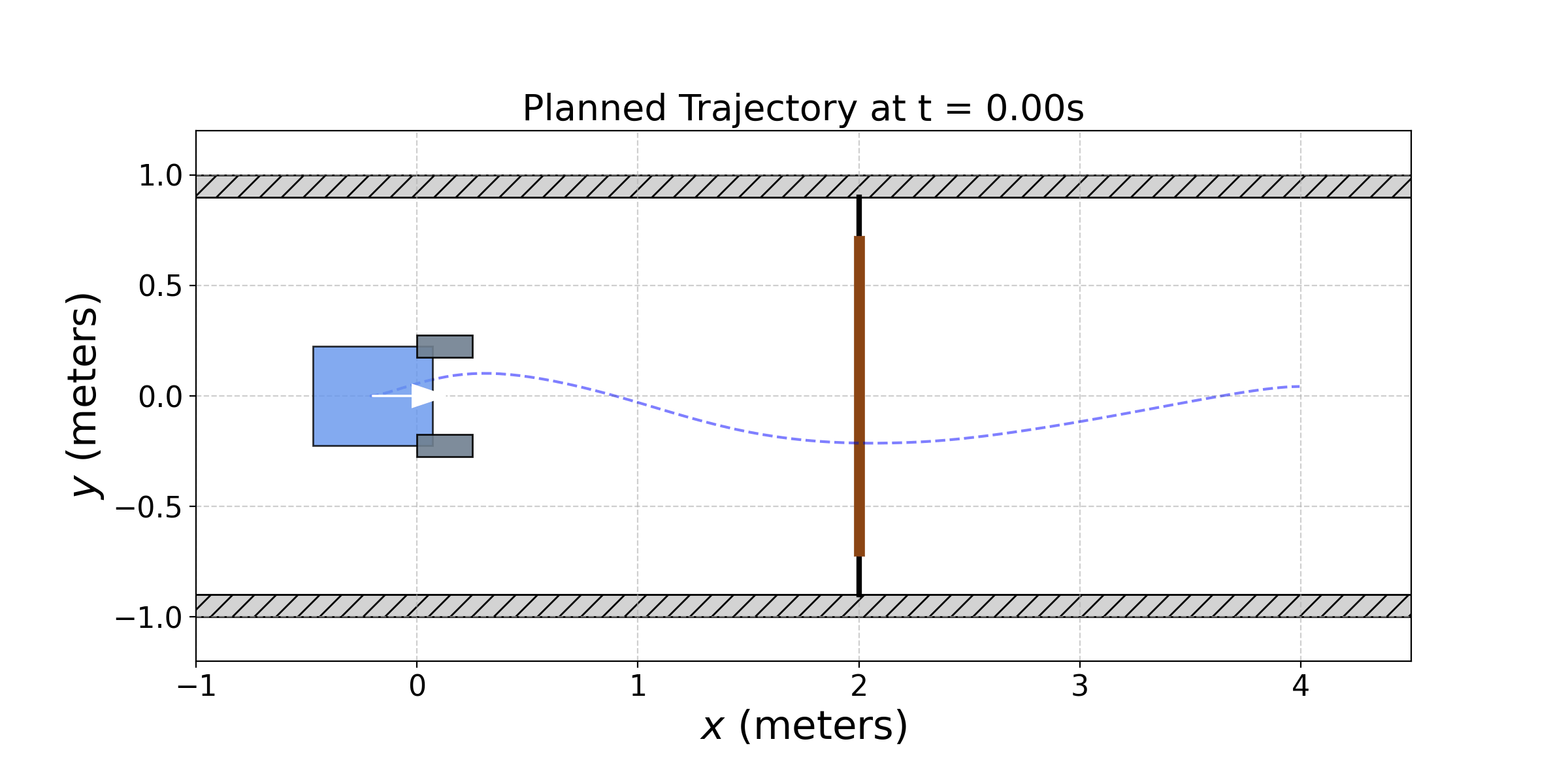
Planned trajectory for a push-style door.
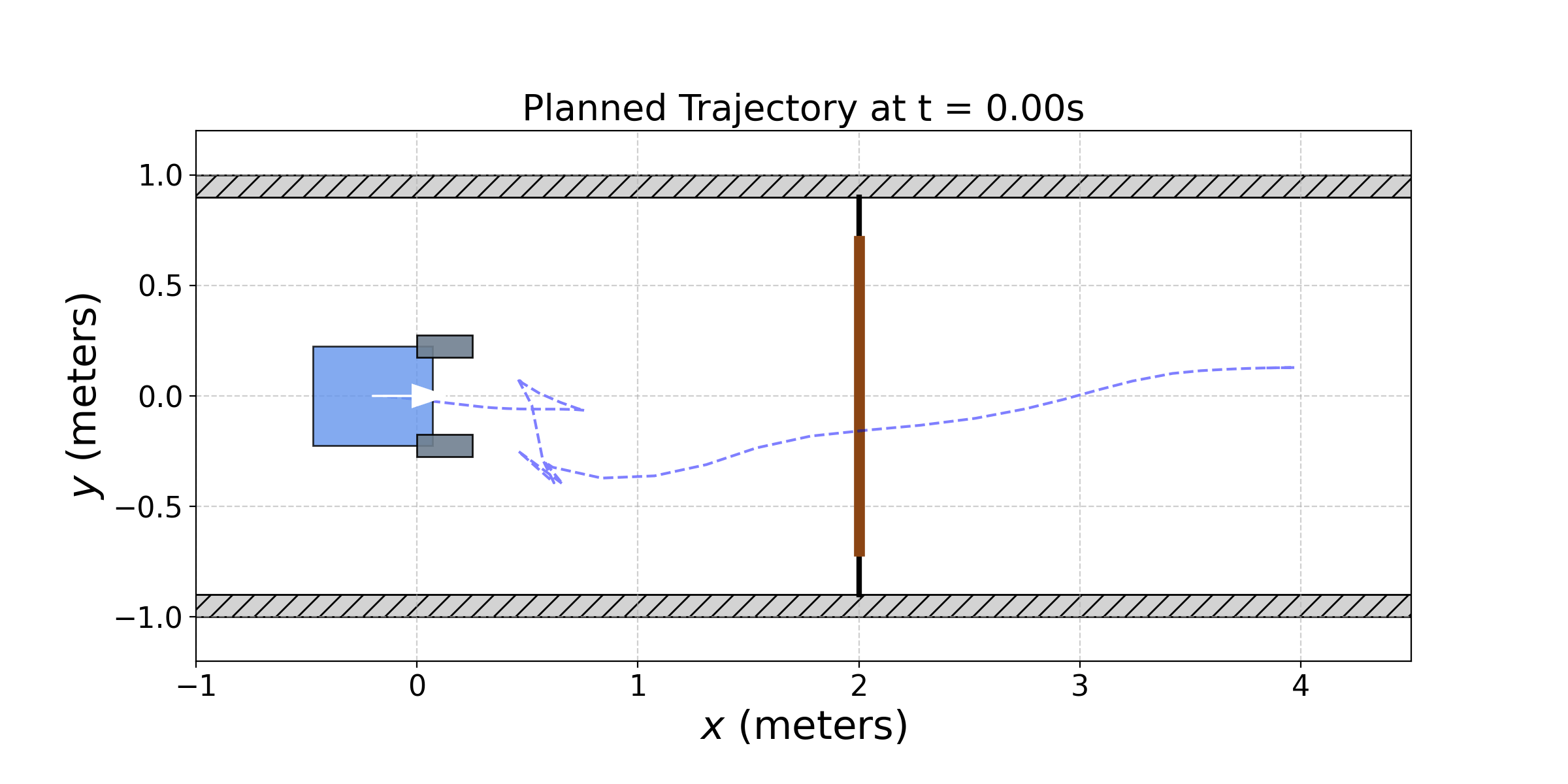
Planned trajectory for a pull-style door.
Validation in High-Fidelity Simulation
We validated our approach in NVIDIA Isaac Sim using a mobile manipulator composed of a Husky base and a UR10 arm. The robot successfully uses the pre-planned paths to autonomously traverse both push-type and pull-type doors, demonstrating the effectiveness of the generated trajectories and the tracking controller.
Simulation of traversing a push-type door.
Simulation of traversing a pull-type door.
Comparison to Search-Based Methods
Compared to traditional decoupled, search-based algorithms, our optimization-based planner generates significantly shorter and smoother paths. For a push-type door, our planner found a path that was 11.6% shorter. [ Jang et al.] The improvement was even more pronounced for the pull-type door, where our path was 22.6% shorter[ Jang et al.]. This demonstrates a favorable trade-off between planning speed and path quality, achieving near-real-time performance.
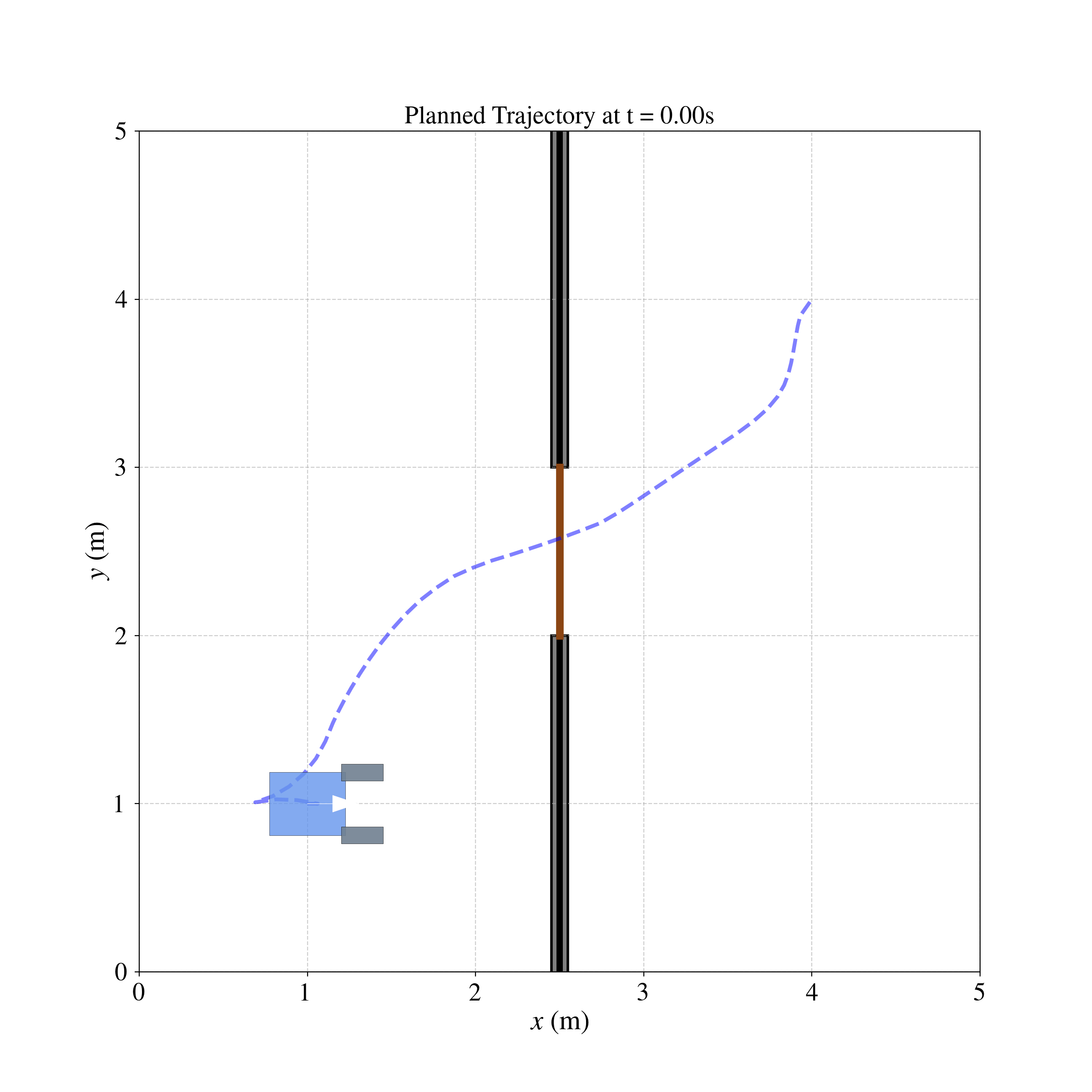
Path comparison for a push-style door (Our MPC vs. Search-Based).
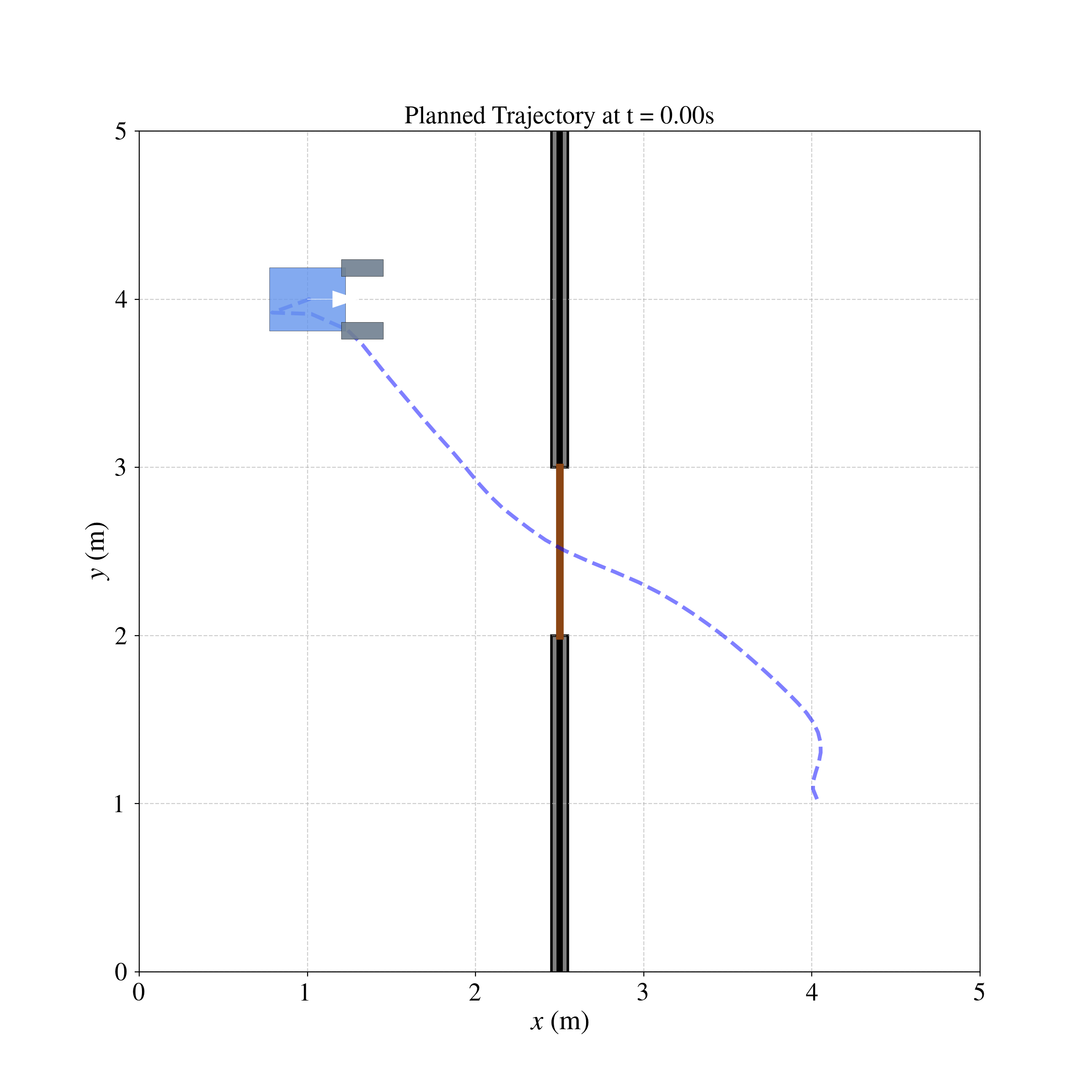
Path comparison for a pull-style door (Our MPC vs. Search-Based).
Robotic Platforms
The generalizability of our kinematics-free planner was demonstrated across two different mobile manipulator platforms: a single-arm robot in simulation and a dual-arm robot for the hardware experiments.
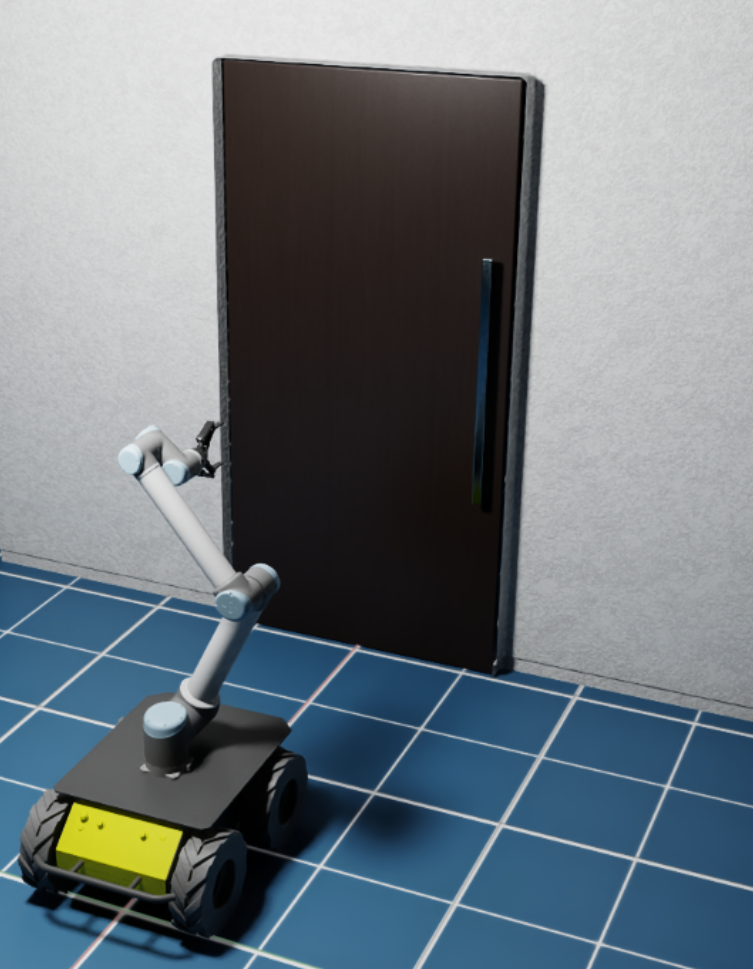
Simulation Platform: Husky A100 base with a 6-DOF UR10 robotic arm.
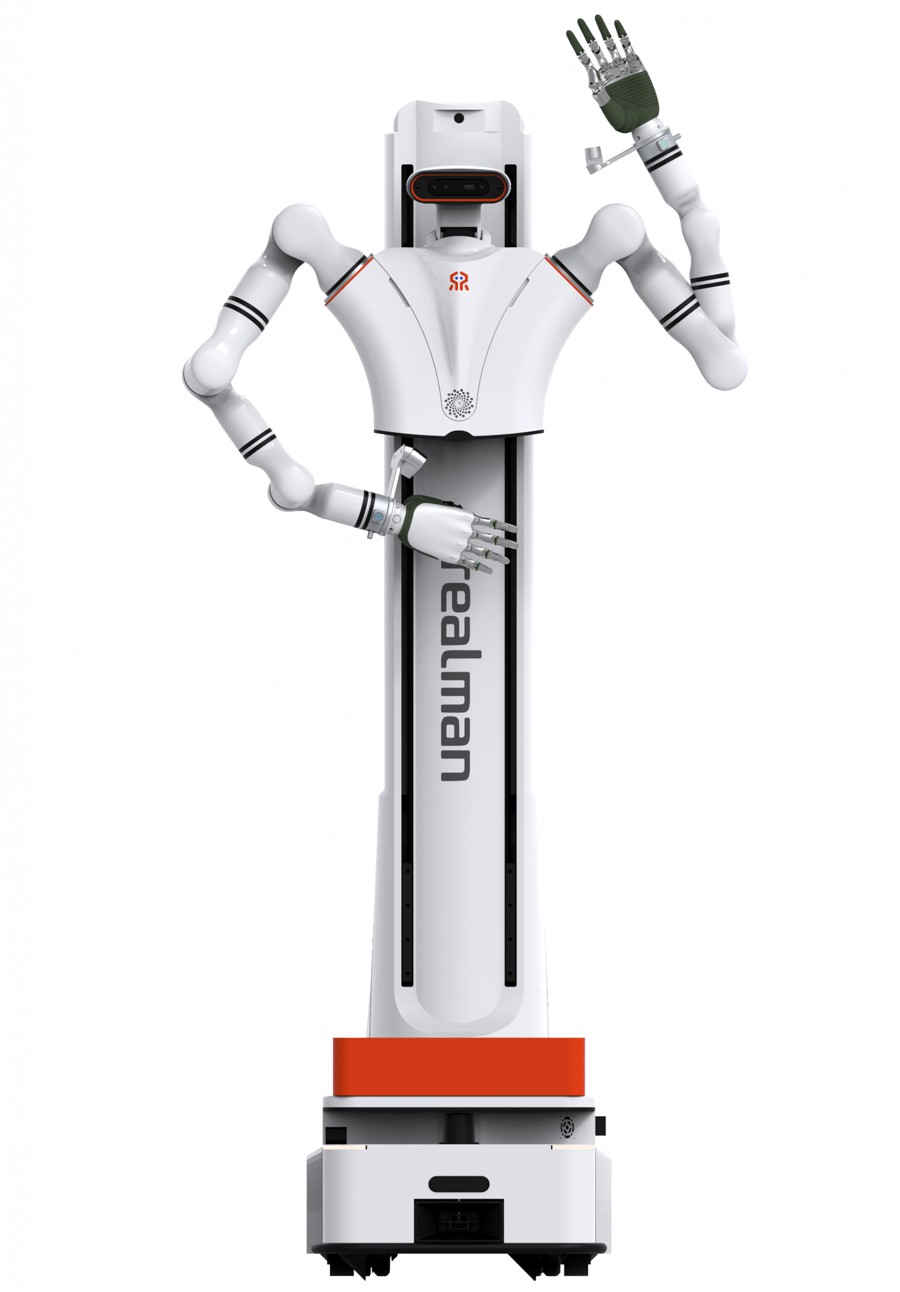
Hardware Platform: Commercial dual-arm robot with two 6-DOF arms.
BibTeX
To comply with double blind policy of the conference, the author names and affiliations are suppressed. Check our WebPage again for updated information.
@inproceedings{Author2026MPCDoor,
title={Optimal Motion Planning for Mobile Manipulators Navigating Doorways via Nonlinear MPC},
author={First Author and Second Author and Third Author},
booktitle={2026 IEEE International Conference on Robotics and Automation (ICRA)},
year={2026},
organization={IEEE},
url={https://YOUR_DOMAIN.com/YOUR_PROJECT_PAGE}
}